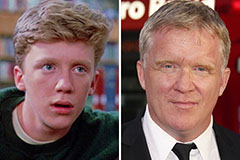How to Carry Out Common Lawn Sprinkler Repair to Maintain Your Watering System
Preserving a reliable irrigation system is crucial for making certain a healthy landscape, and this begins with performing typical lawn sprinkler repair work. Issues such as low tide pressure, clogged up nozzles, and busted heads can substantially impact the system's efficiency. Cleansing or unclogging nozzles and changing malfunctioning heads are fundamental tasks that can boost water distribution. Readjusting water stress to the optimum array of 30-50 psi makes certain consistent protection (Sprinkler service). Seasonal maintenance checks are additionally important for discovering leakages and adjusting timer setups to seasonal variations. To explore the critical actions and techniques for these fixings, let's begin by determining .
Identifying Common Lawn Sprinkler Issues
A well-kept lawn sprinkler system is important for reliable yard treatment, but even the very best systems can experience troubles. Identifying typical lawn sprinkler issues early can stop extensive damage and make certain the longevity of your irrigation system. One constant problem is low tide stress, which can create uneven watering and dry patches on your grass. This concern frequently originates from leakages in the pipelines, damaged sprinkler heads, or clogs within the system.
One more common problem is lawn sprinkler heads that do not turn up or withdraw effectively. This malfunction could be due to debris obstructing the mechanism or a worn-out springtime. Additionally, misaligned lawn sprinkler heads can cause water being splashed onto pathways, driveways, or various other unplanned locations, leading to water waste and not enough insurance coverage of your lawn.
Cleaning and Unclogging Nozzles
When handling typical lawn sprinkler problems, resolving clogs is necessary for keeping optimum system efficiency. With time, particles such as dust, grass clippings, and natural resource can accumulate within the nozzles, obstructing water flow and decreasing irrigation effectiveness. To ensure your sprinklers operate efficiently, routine cleaning and unclogging of nozzles is vital.
Begin by transforming off the irrigation system to stop any unintended water discharge. Very carefully get rid of the nozzle from the sprinkler head. For thorough cleansing, soak the nozzle in a mix of water and vinegar or a commercial cleaning option created to liquify mineral down payments.
Rinse the nozzle under running water to get rid of any type of remaining particles and reattach it to the sprinkler head. Transform the system back on and observe the water distribution to ensure the obstruction has been gotten rid of. Regular upkeep of sprinkler nozzles can dramatically improve the longevity and efficiency of your watering system.
Replacing Broken Lawn Sprinkler Heads
Replacing busted lawn sprinkler heads is an essential action in preserving a reliable irrigation system. When a lawn sprinkler head becomes damaged, it can lead to water wastefulness and uneven protection, which can detrimentally impact the health and wellness of your yard or yard. The primary step is to recognize the malfunctioning head, typically apparent via irregular water spray patterns or water pooling around the base.
Begin by transforming off the supply of water to avoid any unnecessary splilling. Make use of a shovel to carefully dig around the sprinkler head, ensuring you do not harm the bordering piping. Once exposed, unscrew the damaged head from the riser, keeping in mind of the make and design to guarantee you acquire a suitable substitute.
Screw the brand-new lawn sprinkler head onto the riser by hand, guaranteeing it is tight however not excessively tight to stay clear of harming the strings. Turn the water supply back on and examine the new head to guarantee it is operating appropriately, making adjustments as needed.
Changing Water Stress and Coverage
In order to maximize the efficiency of your irrigation system, changing water pressure and coverage is important. Proper water pressure makes sure that each lawn sprinkler head operates effectively, distributing water equally throughout your yard or garden. To start, gauge the water stress at the main supply line making use of a stress gauge. Perfect stress typically varies from 30 to 50 psi. If the pressure is too expensive, take into consideration mounting a pressure regulatory authority to protect against damage to sprinkler heads and pipelines.
Following, focus on readjusting sprinkler head insurance coverage to eliminate completely dry spots and overwatered locations. Begin by activating the system and observing the spray patterns. For rotary heads, readjust the arc and distance settings utilizing a screwdriver to modify the direction and range of water flow. For spray heads, utilize the adjustment screw on the top to make improvements the spray pattern.
Ensure overlapping protection in between adjacent sprinkler heads to prevent missed out on locations. Also, check for any kind of blockages such as plants or structures that may block water circulation. By calibrating water stress and make improvements sprinkler head protection, you can preserve a lavish, healthy and balanced landscape while conserving water resources successfully.
Regular Upkeep Tips and Techniques
Next, check for leakages in the watering lines. Little leaks can escalate right into considerable problems if left unaddressed. Monitor the water stress throughout operation; fluctuations can indicate surprise leakages or blockages. Replace harmed or worn-out Foundation drip parts without delay to prevent additional complications.
Adjust the system's timer settings according to seasonal water demands. Overwatering or underwatering can harm your landscape and waste sources. Furthermore, examine the rain sensing unit and guarantee it is operating appropriately to avoid unneeded watering during rainfall.
Conclusion
Addressing typical issues such as reduced water pressure, clogged nozzles, and damaged heads can considerably boost system efficiency. Cleansing nozzles with a fine needle and vinegar, replacing damaged heads, and changing water stress to 30-50 psi are crucial steps.
 Anthony Michael Hall Then & Now!
Anthony Michael Hall Then & Now! Destiny’s Child Then & Now!
Destiny’s Child Then & Now! Marques Houston Then & Now!
Marques Houston Then & Now! Tina Majorino Then & Now!
Tina Majorino Then & Now! Nadia Bjorlin Then & Now!
Nadia Bjorlin Then & Now!